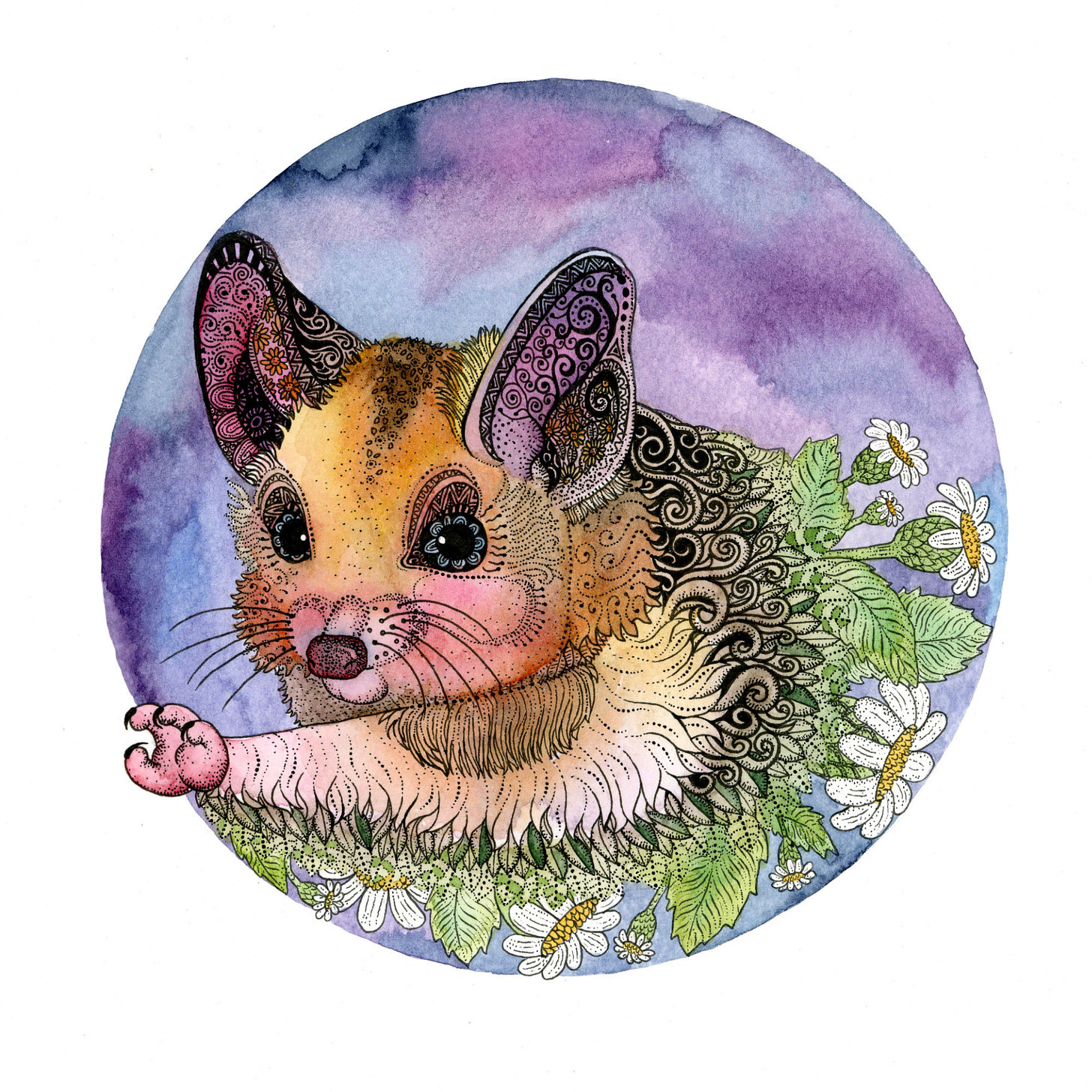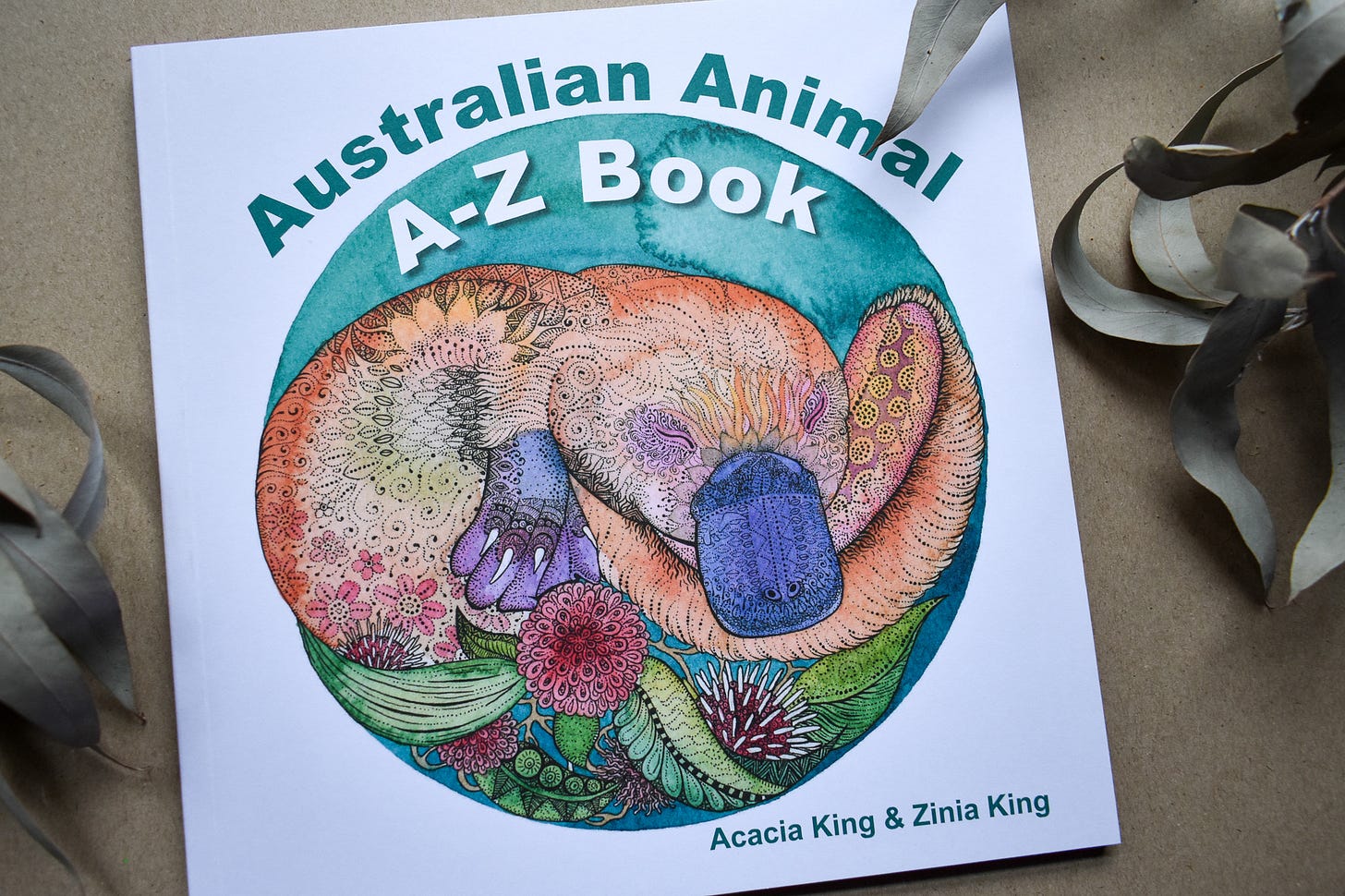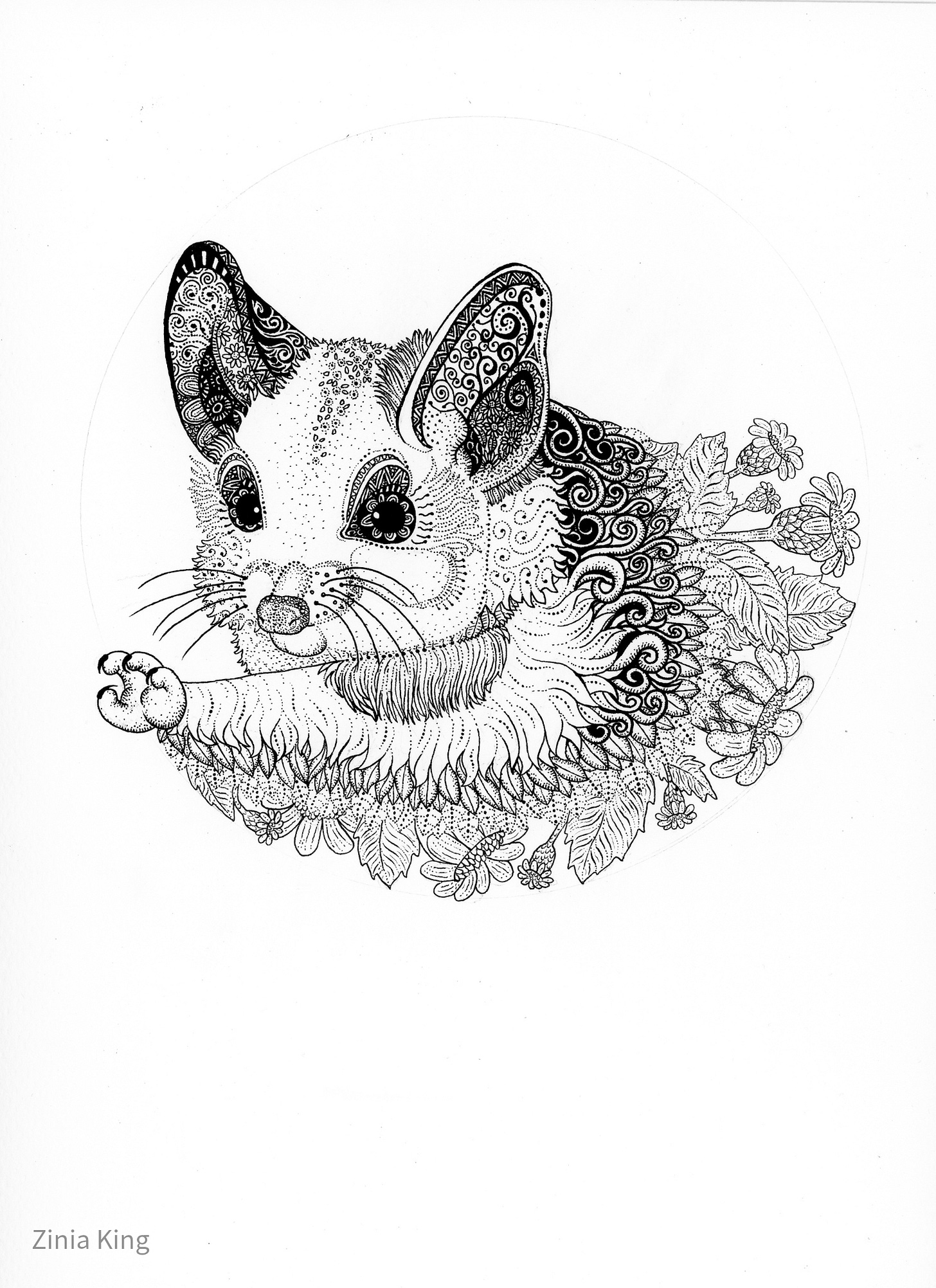Hello beautiful people and welcome to Lesson 4 of ‘Aussie Animals’. I’m often shocked by how little people know about Australia’s animals. Of course, everyone knows about Kangaroos and Koalas… but what about an Antechinus or Mulgara? See a video of me talking about the Dunnart here.
Living in a country that’s caused the extinction of more animals than any other nation (see this ACF PDF), I feel a duty to spread awareness of these animals before they disappear forever (hopefully not).
In 2020, I illustrated an A-Z Book of Australian Animals packed with interesting facts and beautiful artwork to showcase the majesty of these creatures. My sister Acacia did lots of research (using her science background) and we both put together the writing. Check out the book here, they’re printed sustainably in Adelaide and I’m donating $5 from every book sold to the Bob Brown Foundation.
Today we’re looking at the Dunnart, a very cute little Dasurid (carnivorous marsupial) of which there are 19 known species. When I say ‘little’, I really do mean it! The smallest species of Dunnart (the hairy-footed Dunnart) weights only 10 grams and the biggest still only measures up to 25cm head to tail. When little Dunnarts are born (as joeys), they are smaller than a grain of rice!
Dunnarts appear very cute, but they’re actually ravenous killers of the night! They mostly eat insects, but don’t discriminate (sometimes eating little spiders, amphibians, reptiles and even other mammals). Some species eat their entire body weight every night.
When there is lots of food around, Dunnarts gorge and store the excess fat in their tails. When times are tough, they can draw on this excess fat for energy. In the cold hard times, Dunnarts will sometimes bunker down with house mice. The house mice should take care though as Dunnarts will eat mice if the urge takes them!
Dunnarts are nocturnal, so during the day you will find them in all the ‘in-between’ places. Think small nests, hollow logs and cracks in the soil. The hairy-footed Dunnart will even sleep in burrows made by spiders and bull ants. Being nocturnal also means that they are able to conserve water and energy in arid environments. Did I mention that they don’t tend to drink? They get all the liquid they need from their prey.
Dunnarts can be found in most environments around Australia (from forest to desert) and they experience all the classic threats. Habitat loss, bad fire practices, pesticides, cats and foxes. As an individual you can of course help by keeping your cat inside and refraining from using pesticides and poisons. Also donating to helpful conservation charities like Bush Heritage Australia or the Bob Brown Foundation. Don’t forget that I’m donating $5 from every one of my Australian Animal A-Z Books to the Bob Brown Foundation, so you could consider doing that too?! 😊
There is so much more to know about the Dunnart, why not learn more about them and other awesome animals in my Australian Animal A-Z Book?
Well, that it for now - my take on the Dunnart. If you have had an experience with a Dunnart, I’d love to hear about it in the comments. Also, if you liked this blog post and want more interesting arty Australian flora/fauna content like this why not subscribe?
Maybe you’d like to draw your own Dunnart or enjoy this free colouring page on me so you can colour and consider this cute little marsupial.
With love and a dose of whimsy,
Zinia King






